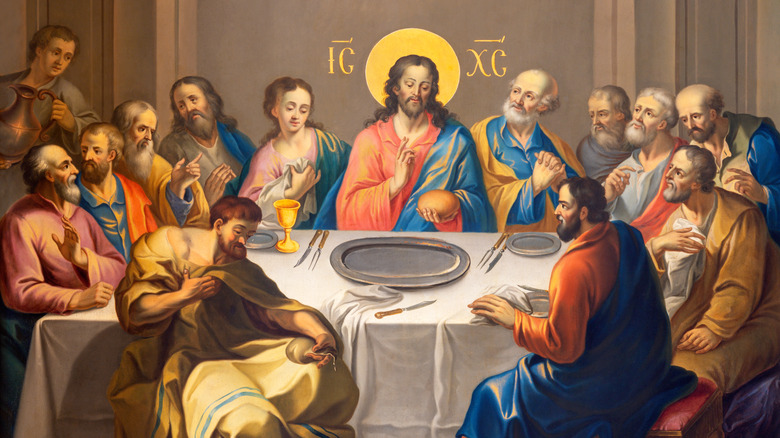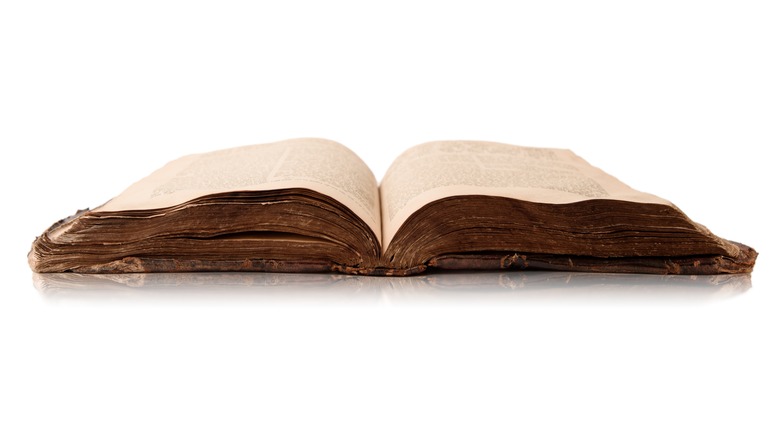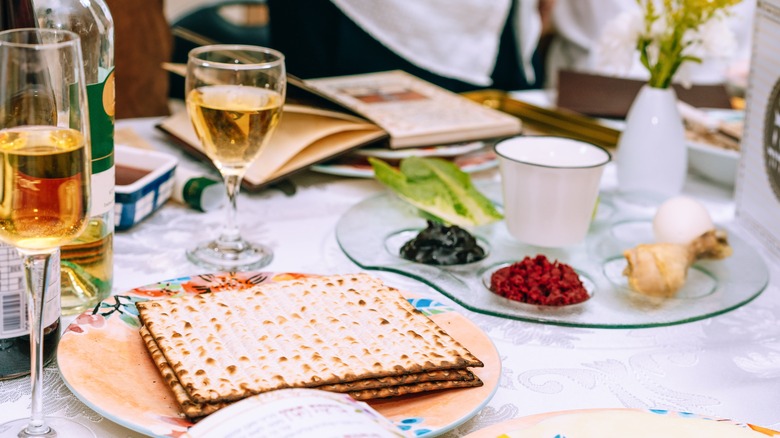Was The Last Supper A Seder? Exploring The Theories
We may receive a commission on purchases made from links.
On the evening before the Romans crucified Jesus Christ, he and his 12 disciples shared a last meal together in an upper room of a house in Jerusalem, according to the New Testament. What has become known as the Last Supper or Lord's Supper is at the heart of Christianity since it was during this gathering that Jesus introduced the Eucharist — the ritual reenactment of the Last Supper through the sharing of bread and wine, representing the blood and body of Christ.
There's been a longstanding debate about exactly what kind of meal Jesus and his disciples shared. The Gospels of Matthew, Mark, and Luke, known as the Synoptic Gospels because they all share similarities in their descriptions and sayings related to Jesus, clearly state that the Last Supper took place during Passover. "And on the first day of Unleavened Bread, when they sacrificed the Passover lamb, his disciples said to him, 'Where will you have us go and prepare for you to eat the Passover?'" the Gospel of Mark 14:12 recounts, as does Matthew 26:17, nearly word for word. To many people, this has long signified that the event was a seder. But not everyone agrees, including some religious scholars and historians.
The debate
The seder is central to the Jewish celebration of Passover, which commemorates the Jews' exodus from Egypt and includes eating lamb paired with unleavened bread and bitter herbs, among other aspects of the celebration. The Biblical scholar Joachim Jeremias in his book "The Eucharistic Words of Jesus" points to the Synoptic Gospels' description of the Last Supper to come up with 14 similarities between that meal and the seder, including the traditional practice of reclining while eating, having the meal at night, and the breaking of bread during the supper, among other similarities.
"While such behavior may have been characteristic of the Passover meal, it is equally characteristic of practically any Jewish meal," Jonathan Klawans, a professor of religion at Boston University, points out in "Was Jesus' Last Supper a Seder?" Furthermore, in the Gospel of John, which differs in many aspects from the Synoptic Gospels, the narrative shows that the Last Supper occurred before the start of Passover.
The Passover seder has changed over time
And then there's the scholastic view that the Passover seder has changed so much over time that there's little to connect the Last Supper with the Passover seder as we know it. To start, there seems to be little in rabbinic texts — Jewish religious literature — that describes the Passover meal when Jesus would have been alive, instead focusing on the rituals connected to the sacrificing of the lambs before the meal.
A Jewish person today probably wouldn't recognize a Passover seder from more than 2,000 years ago when Jesus would have been alive. There would have been no gefilte fish, matzo ball soup, or potato kugel as these foods are of Ashkenazi Jewish origin and didn't enter the menu until much more recently. Over time, the Passover meal incorporated "Hellenistic banquet traditions, Aramaic folk songs, and rabbinic commentary" among other aspects, Michael David Lukas points out in "Jesus' Final Passover: Was the Last Supper really a Seder?" While there is support for both schools of thought regarding the Last Supper, since we weren't present at the event, it's difficult to answer either way with certainty.


